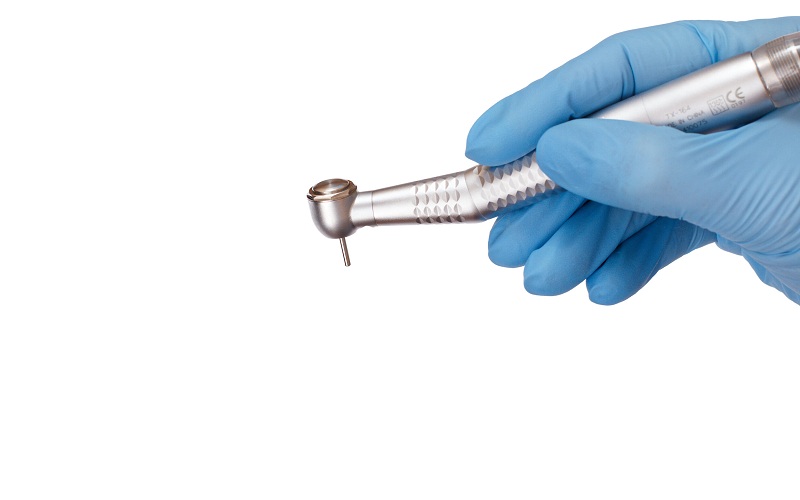What Is A High Speed Dental Handpiece?
5 min read
When it comes to dental practice, precision, comfort, and efficiency are paramount. This is why high-speed dental handpieces have become an indispensable tool for dentists worldwide. This comprehensive exploration will provide insights into what a high-speed dental handpiece is, the different types available, the benefits they offer, how to choose the right one for your practice, and crucial maintenance tips to ensure longevity and top performance.
Introduction to High-Speed Dental Handpiece
Dental handpieces are the engines of a dental practice, driving the precision tools necessary for almost all dental procedures. A high-speed dental handpiece, as the name suggests, is a dental drill or burr that operates at significantly higher RPMs than a standard handpiece. It’s the go-to tool for tasks like cavity preparation, bulk material removal, and other high-demand jobs that require speed and precision. These handpieces are a critical component of modern dentistry, playing a pivotal role in various essential treatments.
Benefits of Using a High-Speed Dental Handpiece
Increased Efficiency in Dental Procedures
A high-speed dental handpiece offers key advantages, including time saved during procedures. Operating at higher speeds allows dentists to prepare cavities faster, resulting in shorter appointments and reduced patient fatigue. This increased efficiency without compromising quality is crucial for meeting patient demands and growing dental practices.
Improved Patient Comfort
The faster the procedure, the more comfortable it is for the patient. High-speed handpieces create a smoother cut, generate less heat, and preserve tooth structure. Patients appreciate efficient dental work, especially when anxious or requiring prolonged treatments. High-speed dental handpieces are key to a positive patient experience.
Enhanced Precision and Control
Control is crucial in dental procedures, and the right tools make a significant difference. High-speed handpieces are designed for precision and control, allowing dentists to perform intricate procedures with exceptional detail. These handpieces produce a fine, controlled spray that prevents frictional heat, providing dentists with unparalleled control over the cutting process. This results in precise, smooth work and reduces the risk of microfractures and pulp irritation.
Different Types of High-Speed Dental Handpieces
High-speed dental handpieces come in several different types, each with its unique features and advantages.
Air-Driven Handpieces
Air-driven, or turbine, handpieces are powered by air, which is channeled through the dental unit from a compressor. These handpieces are lighter, more affordable, and have fewer parts, meaning they are generally easier to maintain. They possess impressive cutting power and velocity, making them ideal for a wide range of dental procedures where precision and speed are non-negotiable.
Electric Handpieces
Electric handpieces are powered by a motor that is typically connected to an electrical source via a cord. They offer a broad speed range and consistent torque, making them a versatile option for more intricate dental procedures requiring a steady hand and constant control. They tend to be quieter than their air-driven counterparts and have a longer lifespan.
Fiber Optic Handpieces
Fitted with fibre-optic technology, these handpieces enhance visibility within the oral cavity, especially during posterior or complex procedures. The clear illumination provided by the fibre optics allows for precise and accurate work, reducing the chance of errors and the need for repeated procedures. They are typically more expensive than non-fibre optic alternatives but offer distinct advantages in terms of operation precision and visual clarity.
Factors to Consider When Choosing a High-Speed Dental Handpiece
Selecting the right high-speed dental handpiece for your practice is crucial, and several factors should influence your decision.
Speed and Torque
The speed and torque of the handpiece dictate its cutting efficiency. Higher speeds are required for precise cutting, and adequate torque ensures the cutter remains effective even under load. Ensure that the speed and torque ranges of the handpiece align with the types of dental work you anticipate performing.
Maintenance and Durability
Dental handpieces undergo rigorous daily use and must endure constant sterilisation. Durability is a significant consideration, as handpieces with fewer moving parts are less prone to malfunction. Regular and easy maintenance routines are also essential to extend the lifespan of the instrument and maintain performance standards.
Ergonomics and Comfort
Dentists and dental staff frequently work with high-speed handpieces, so ergonomics can significantly impact user comfort and fatigue. Handpieces with a well-balanced design, good grip, and reduced vibration can help prevent musculoskeletal disorders and keep operators comfortable during extended procedures.
Cost
While an important factor, the cost of the handpiece should not be the sole determinant of your choice. A high-quality, more expensive handpiece that is durable and efficient may offer better value in the long run than a cheaper, less durable counterpart. Consider the handpiece’s features, warranty, and the overall costs tied to its use over time.
Tips for Proper Use and Maintenance of a High-Speed Dental Handpiece
Maintaining high-speed dental handpieces is as important as their correct usage.
Sterilization and Infection Control
Thorough sterilisation is essential to prevent cross-contamination and maintain a safe environment for patients and staff. Always follow the manufacturer’s recommendations and local guidelines for the sterilisation process, ensuring that all parts of the handpiece are properly disinfected.
Lubrication and Maintenance Schedule
Regular lubrication is key to ensuring smooth operation and preventing premature wear of the handpiece. Develop and adhere to a strict maintenance schedule that includes a routine of cleaning, sterilising, and lubricating the handpiece after every use. Also, periodically inspect the bur chuck and any O-rings for signs of wear or damage and replace them as needed.
Storage and Handling
Store high-speed dental handpieces in a designated, clean, and dry area to protect them from contamination and damage. Handling should be minimised to reduce the risk of contamination and avoid dropping, knocking, or otherwise compromising the instrument.
Conclusion
High-speed dental handpieces serve as a linchpin in the dental armamentarium, radically enhancing the efficiency, precision, and patient experience of dental procedures. By familiarising yourself with the features and functions of different types of handpieces, and by adhering to proper maintenance and usage protocols, you can maximise the potential of these essential tools. As dental technology continues to advance, handpieces play an increasingly pivotal role in delivering optimal oral care. Whether you are purchasing a new handpiece or maintaining an existing one, these considerations and insights will not only elevate your practice but also enhance the quality and safety of the care you provide.





